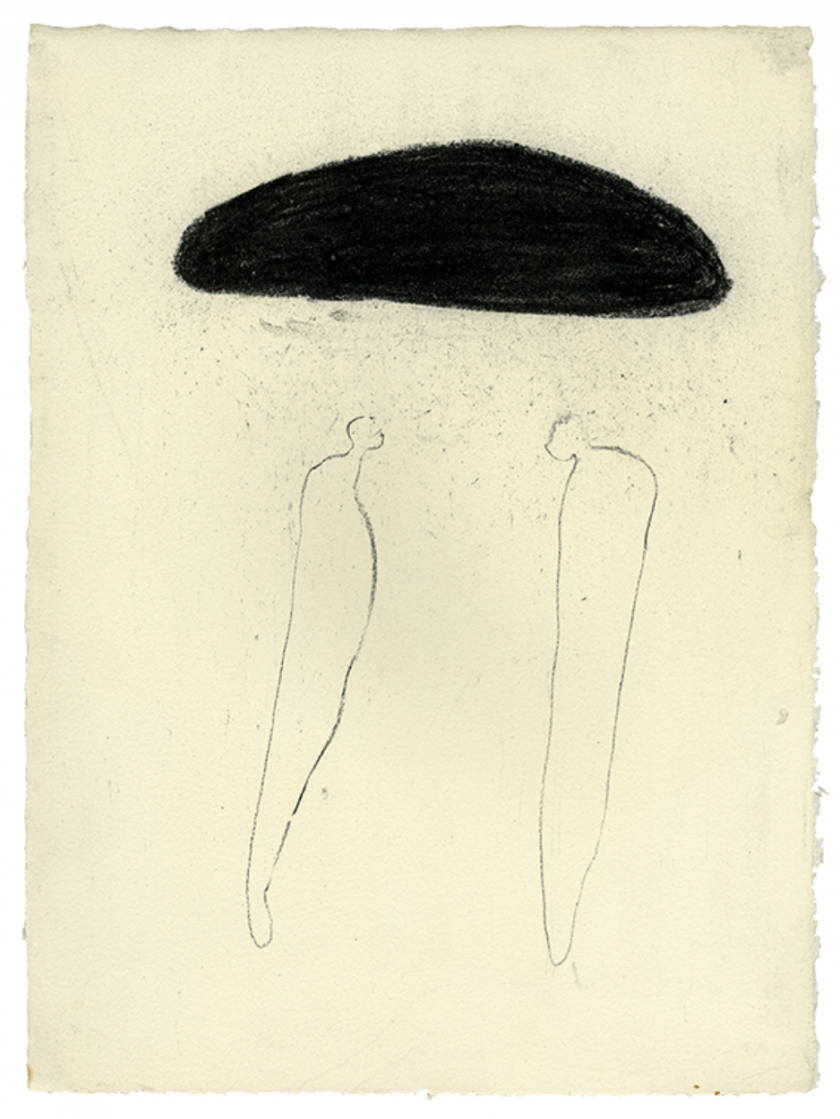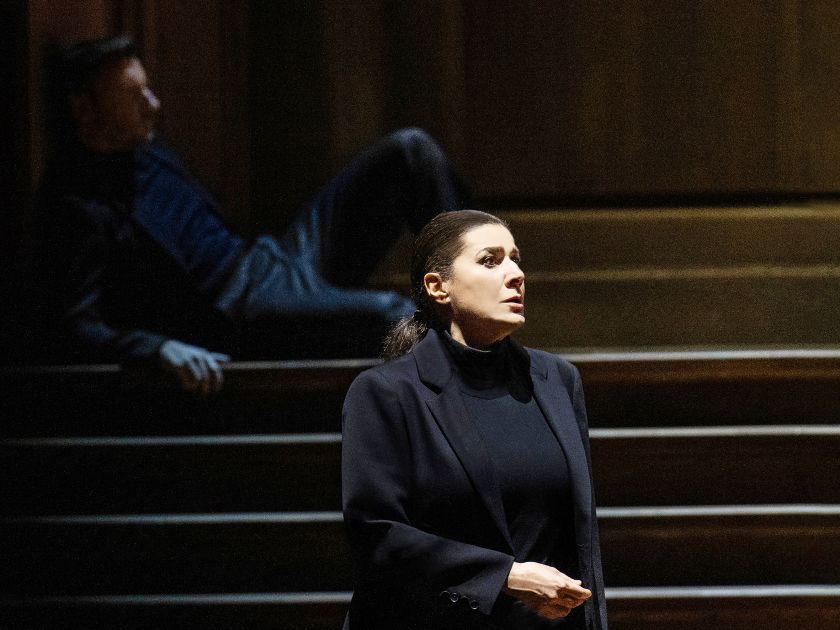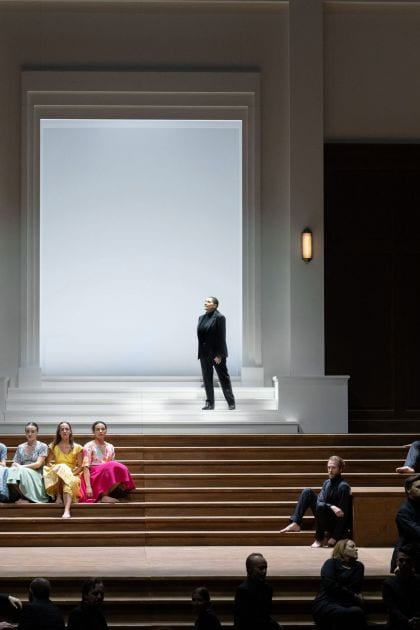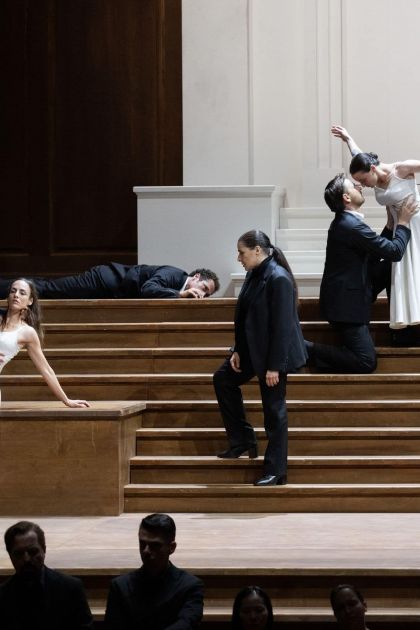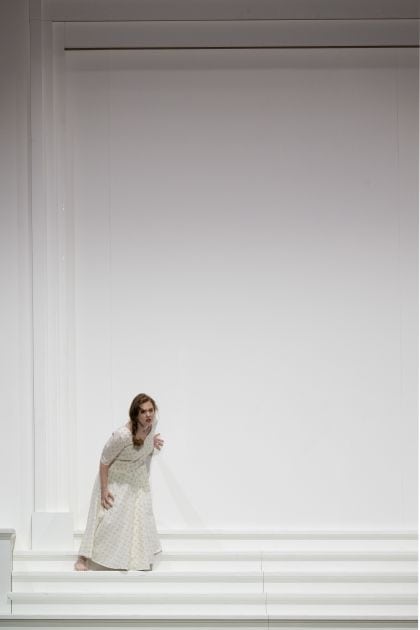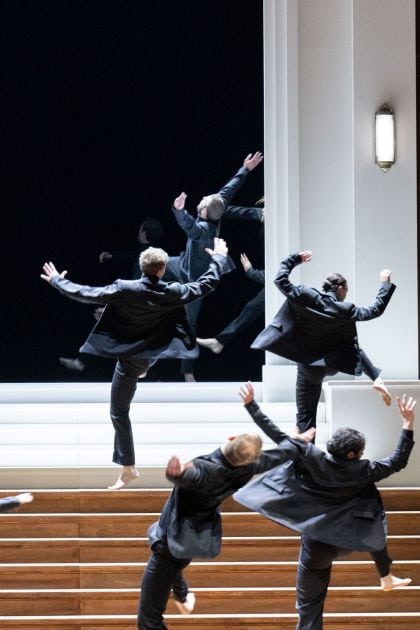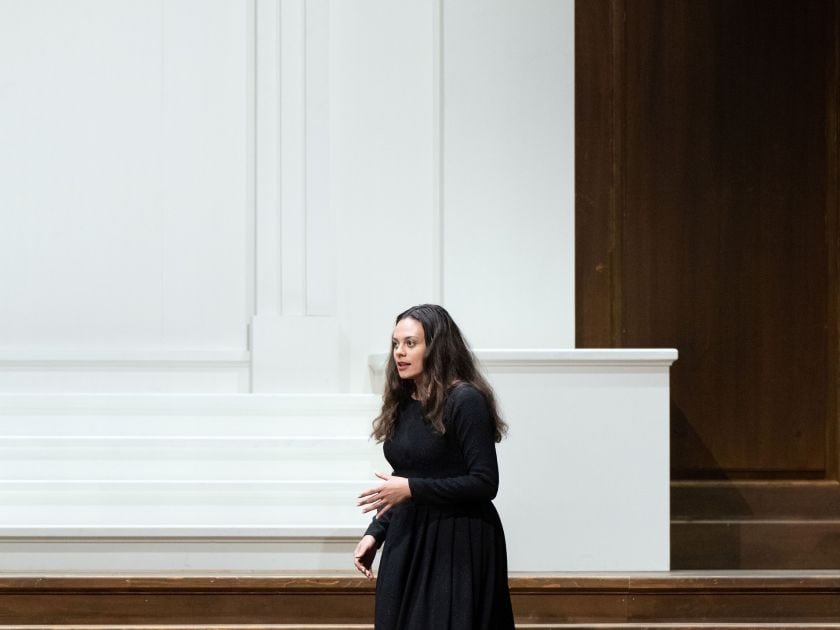The creators of musical theatre made early use of the myth of the Thracian singer Orpheus who follows his dead bride Eurydice down into the underworld in order to restore her to the realm of the living by the power of his song. Christoph Willibald Gluck was neither the first nor the last composer to treat this subject matter, which first appears in the Georgics of Virgil and most notably in Ovid’s Metamorphoses. From Monteverdi to Henze, Offenbach to Trojahn, the sufferings of this artist on his path between the two worlds have provided a continually fascinating source of inspiration.
But what makes Gluck’s opera, a work of the early Classical period, so outstanding is its concentration on a single figure. Even if the title Orfeo ed Euridice alludes to the relationship between the couple, the focus clearly lies on the singer, who according to legend could enrapture the hearts of all living creatures with his music. When the opera starts, Euridice is already dead, and the audience experiences the immense grief of the man who has only just wed her. The work clearly shows an artist in whose loneliness and isolation the death of a loved one becomes the central theme. The question is whether Orfeo’s loneliness can be overcome — a critical question that the protagonist is forced continually to confront and which at the same time shapes his creativity. The audience becomes witness to an endless process of suffering, the tragedy of a human loss, with the conflict emerging in great purity without the adjunct of complicated intrigues. These features led to the work being considered a prototype of ‘reform opera’: Gluck put his music wholly at the service of dramatic expression, completely eschewing secco recitative and breaking away from the strict rules of opera seria.
Dance also plays an important role in Orfeo ed Euridice, making a merging of the roles of director and choreographer an obvious choice, as was the case with Margarete Wallmann in the 1930s Salzburg Festival production of the opera. According to Christof Loy, who continues this tradition, dance should by no means be seen as a discrete element: dance and text, music and movement should complement each other and not simply co-exist while remaining separate entities — the borders between them should be fluid. The notion of boundlessness is also emphasized by the stage spreading out like a limitless space and evoking a path on which all elements unite, and which could begin all over again endlessly.
The new Salzburg production is based on the Parma version of the opera that was performed in 1769 — that is, between the more familiar versions staged in Vienna (1762) and Paris (1774) — to celebrate the nuptials of the Spanish infante, Duke Ferdinand of Bourbon-Parma, and the Austrian archduchess Maria Amalia. For this occasion Gluck combined a prologue and three single acts that focus on the themes of love and marriage, and gave the resultant work the title of Le feste d’Apollo, with the ‘Atto d’Orfeo’ forming the conclusion. It is astonishing that such a joyful celebration should have been marked by showing on stage such a tragic event as the loss of a beloved wife. Gluck based his Orfeo act on the first version of Orfeo ed Euridice from Vienna. The role of Orfeo was sung by the hugely popular soprano castrato Giuseppe Millico, necessitating the transposition of the part from alto to soprano. Along with other modifications, Gluck eliminated the three-act structure of the Vienna version, combining the scenes to form a single act. The Salzburg production will follow this idea of unity, wholly in line with the composer’s intentions, to make Orfeo’s human dilemma appear as pure as possible and also free from gender-specific associations — thus engaging the emotions of the audience, and offering possibilities for identification.
Klaus Bertisch
Translation: Sophie Kidd
